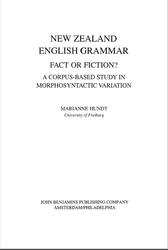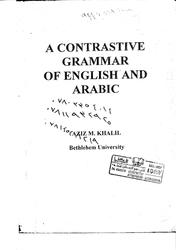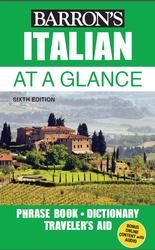New Zealand English grammar, fact or fiction, Hundt M., 1998.
New Zealand English (NZE), like Canadian, South African and Australian English, belongs to those national varieties of English that are not fully institutionalised (cf. Quirk 1990:6), i.e. its standard has not yet been described. On a scale that measures the degree of codification, Clyne (1995:22f.) distinguishes "full centres" like the US and Britain from "nearly full centres" (Australia) and "semi-centres" like Canada and New Zealand. The main difference between "nearly full centres" and "semi-centres" is that the latter have been recognized as separate varieties but no attempts have been made to codify the national variety. For Australian English, the major step in becoming a "nearly full centre" was the publication of the Macquarie Dictionary in 1981. With the recent publication of the Oxford Dictionary of New Zealand English (1997), its Tasmanian cousin has also crossed the threshold and become a "nearly full centre".1 But so far, only the lexicon of NZE has been codified. The present study is to be seen as a further step towards the codification of NZE. It focuses on the less accessible aspect of grammatical variation. Specifically, I would like to investigate whether the following assumption by Greenbaum can be upheld.

The notion of 'standard' in English.
Standard English has often been defined as the 'correct' or 'received' form of English, an idea inherited from the purist tradition of the 17th to the 19th centuries adhering to the myth that a language ought to be uniform. In such a view, variability is not tolerated and deviation in colonial varieties perceived as 'corruption'. A less ideologically biased definition conceives standard English as the conventionalised norm usually based on or identical with the most prestigious variety and having supra-local currency.
In the 20th century, both a trend towards the recognition of diversity and older tendencies towards uniformity can be observed. They also surfaced in a series of letters to the editor of The Dominion (see Appendix 1). A closer look at some of them will reveal just how contradictory even those views are that argue for a uniform standard. Among the arguments for linguistic uniformity a recurring theme is that the inability of young New Zealanders to conform to linguistics standards will be a disadvantage for them in the job market. Linguists who fail to acknowledge this 'fact' are accused of being too theoretical and out of touch with the 'real world' (cf. the letter by A. S. Ford, 23 December 1994).
Contents.
List of Figures and Tables.
Abbreviations.
Preface.
1. Introduction.
1.1. Previous research.
1.1.1. NZE and its relation to other national varieties.
1.1.2. NZE and language change.
1.1.3. Stylistic variation within NZE 1.2 Aim and scope of the study.
2. Theoretical and methodological foundations.
2.1. The notion of 'standard' in English.
2.2. International English and national standards.
2.3. Variation studies and corpus linguistics.
2.3.1. Corpus linguistics and statistics.
2.3.2. The corpora - sampling principles.
2.3.3. The corpora - corpus size.
2.3.4. Corpus linguistics and variation studies: An integrated approach.
2.3.5. Corpus linguistics and elicitation tests.
3. Morphology.
3.1. Irregular Verbs.
3.1.1. Burn, learn and dream in New Zealand, British and American English.
3.1.2. Regularization of irregular past tense forms: A comparison of New Zealand, Australian and British English.
3.1.3. Prove.
3.1.4. Gotten.
3.2 Comparison of adjectives 38.
3.2.1. Periphrastic comparison of monosyllabic adjectives.
3.2.2. Double comparatives 3.3 The 5-genitive.
3.4. Summary.
4 Syntax.
4.1. Have.
4.1.1. Corpus data - occurrences of have.
4.1.2. Have to with modal meaning.
4.1.3. Full verb have.
4.2. Shall and will.
4.3. Marginal modals.
4.3.1. Need and dare.
4.3.2. Ought (to).
4.3.3. Used to.
4.4. Aspect.
4.4.1. Preterite and perfect.
4.4.2. The progressive.
4.5. A note on the get-passive 78.
4.6. Collective nouns.
4.6.1. Regional variation.
4.6.2. Verbal, pronominal and mixed concord.
4.6.3. Diachronic change and stylistic variation.
4.6.4. Corpus data.
4.7. The mandative subjunctive.
4.7.1. Comparing NZE with BrE and AmE.
4.7.2. Mandative constructions in NZE and AusE.
4.8. For-to-infinitive constructions.
4.9. Summary.
5. Lexico-grammar.
5.1. Different.
5.2. Protest and appeal 108.
5.3. Chance and provide.
5.4. Farewell.
5.5. Screen.
5.6. Look.
5.7. Summary.
6. Statistical significance and linguistic relevance.
6.1. Because.
6.2. Would.
6.3. Not.
6.4. Summary.
7. Conclusion.
7.1. Regional variation and diachronic change.
7.2. Regional and stylistic variation.
7.3. On the role of frequency as a defining criterion for variety-specific variants.
7.4. New Zealand English - a separate national standard?.
7.5. Representativeness of the sample and the validity of results.
7.6. Results of elicitation tests and findings based on corpus data.
References.
Appendix 1.
Appendix 2.
Appendix 3.
Appendix 4.
Index.
Бесплатно скачать электронную книгу в удобном формате, смотреть и читать:
Скачать книгу New Zealand English grammar, fact or fiction, Hundt M., 1998 - fileskachat.com, быстрое и бесплатное скачивание.
Скачать pdf
Ниже можно купить эту книгу, если она есть в продаже, и похожие книги по лучшей цене со скидкой с доставкой по всей России.Купить книги
Скачать - pdf - Яндекс.Диск.
Дата публикации:
Теги: учебник по английскому языку :: английский язык :: Hundt
Смотрите также учебники, книги и учебные материалы:
Следующие учебники и книги:
 University Rankings, Macleans Canadas Best Schools, Masse K., 2018 — Technology, health, energy, the economy engineers make a difference in all aspects of everyday life. McMaster Engineering faculty and students … Книги по английскому языку
University Rankings, Macleans Canadas Best Schools, Masse K., 2018 — Technology, health, energy, the economy engineers make a difference in all aspects of everyday life. McMaster Engineering faculty and students … Книги по английскому языку Design Methodology for Future Products, Krause D., Heyden E., 2022 — This book aims to contribute in the field of design methods and their implementation for innovative future products. A data-driven, … Книги по английскому языку
Design Methodology for Future Products, Krause D., Heyden E., 2022 — This book aims to contribute in the field of design methods and their implementation for innovative future products. A data-driven, … Книги по английскому языку A contrastive grammar of english and arabic, Khalil A.M., 1999 — This book is a contrastive study of English and Arabic at the phonological, morphological and syntactic levels. It is intended … Книги по английскому языку
A contrastive grammar of english and arabic, Khalil A.M., 1999 — This book is a contrastive study of English and Arabic at the phonological, morphological and syntactic levels. It is intended … Книги по английскому языку Italian At a Glance, Foreign Language Phrasebook and Dictionary At a Glance Series, Costantino M., 2018 — So you’re taking a trip to one of the many fascinating countries of the world. That’s exciting! This phrase book, … Книги по английскому языку
Italian At a Glance, Foreign Language Phrasebook and Dictionary At a Glance Series, Costantino M., 2018 — So you’re taking a trip to one of the many fascinating countries of the world. That’s exciting! This phrase book, … Книги по английскому языку
Предыдущие статьи:
 Human Missions to Mars, Enabling Technologies for Exploring the Red Planet, Rapp D., 2008 — Human missions to Mars represent the pinnacle of solar system exploration for the next half-century. In addition to providing a … Книги по английскому языку
Human Missions to Mars, Enabling Technologies for Exploring the Red Planet, Rapp D., 2008 — Human missions to Mars represent the pinnacle of solar system exploration for the next half-century. In addition to providing a … Книги по английскому языку How to Make Masks, Good J., 2012 — It’s just as much fun to make a mask as it is to wear it after it’s finished. And remember … Книги по английскому языку
How to Make Masks, Good J., 2012 — It’s just as much fun to make a mask as it is to wear it after it’s finished. And remember … Книги по английскому языку How Students Think When Doing Algebra, Rhine S., Harrington R., Starr C., 2019 — This book is the result of a multi-year project to synthesize research on algebraic thinking from the past 35 years … Книги по английскому языку
How Students Think When Doing Algebra, Rhine S., Harrington R., Starr C., 2019 — This book is the result of a multi-year project to synthesize research on algebraic thinking from the past 35 years … Книги по английскому языку Hey friends 3, Student book, Foster F., Brown B. — Фрагмент из книги. The Death Valley is one of the hottest places In the world. It has got the record … Книги по английскому языку
Hey friends 3, Student book, Foster F., Brown B. — Фрагмент из книги. The Death Valley is one of the hottest places In the world. It has got the record … Книги по английскому языку




